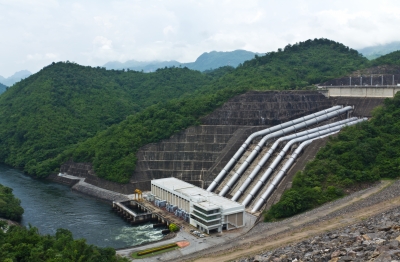May 1, 2019 SANDRP
In 2018-19, for the third year in succession, power generation from India’s large hydropower projects was below 10% of total electricity generation. In 2016-17, for the first time in independent India’s history, power generation from large hydropower projects fell below 10% of total electricity generation. This calculation is based on actual generation (measured as Million or Billion Units and not installed capacity (measured in Mega Watts).
As per the just released figures for the year ending on March 31, 2019, the power generation from large hydropower projects (CEA only reports large hydro generation) in 2018-19 was 134.89 BU, when total power generation in India (including renewables generation of 126.80 BU, but excluding Bhutan imports of 4.41 BU) was 1370.87 BU, hence hydropower generation in 2018-19 was 9.84% of total electricity generation. The hydropower generation proportion to total electricity generation was 9.90% in 2016-17 and 9.68% in 2017-18.
Why? Some of the major reasons for this declining proportion of hydropower generation are: diminishing generation of existing hydropower projects in India and large hydropower projects becoming more and more unviable. As power minister of India stated in the Parliament recently, at least 15 large hydro projects (NHPC chief says 40 HEPs need bailout package) with capacity close to 6000 MW remains stranded in India.
In fact, diminishing hydro capacity is a global trend (Source:http://www.transrivers.org/2019/2597/).
A direct fallout of this could be seen in the capacity addition trends. The capacity addition that was 7028 MW in 1999-2004 and 8553 MW in 2004-09 has fallen to 2464 during 2009-2014 and 4875 MW during 2014-19. In the latest two years (2017-19) capacity addition has been 921 MW.
The Govt continues to push large hydro On March 8, 2019, on the eve of India’s current ongoing general elections, the Union Government declared a slew of additional subsidies for hydropower projects, but this seemed more for political economy reason, as also suggested by the timing of the announcement, just before the model code of conduct came into force on March 11, 2019. But the government needs to understand that even these additional subsidies for the already over subsidized hydropower sector is not going to help make them viable. When solar and wind power is available at price below Rs 3 per unit, why is there attempt to push large hydro whose cost is universally over Rs 5-6 per unit at least for first few decades.
The writing is clearly on the dam walls: India needs to pay attention to optimizing generation from existing hydro and explore the possibilities of installing hydro projects at 97% of India’s existing large dams where there is no hydro component. We also need to first manage our peak hours’ power demand and optimize generation during such demands, only after assessing and addressing the social and environmental impacts of peak hour power generation from large hydro projects. Else we will be destroying more rivers and their biodiversity and livelihoods of people dependent on such rivers, while throwing more money into the pockets of consultant, contractors, equipment suppliers and other vested interests. The Ministry of Environment and Forests and its Expert Appraisal Committee on River Valley Projects too needs take this opportunity to improve our pathetic environmental governance rather than keep pushing more clearances for projects that are only likely to remain paper horses.
Source: SANDRP (ht.sandrp@gmail.com)




